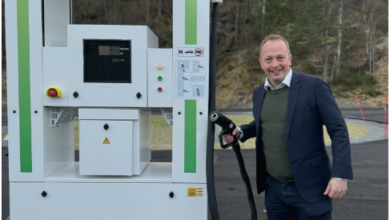Labor calls on governor, legislature to invest in hydrogen infrastructure

Six powerful California labor unions today joined forces to ask Governor Newsom and Legislature leaders to allocate 30 percent of the state’s Clean Transportation Plan Funds to hydrogen to help build 1,000 fueling stations.
In a letter to the Governor and Legislative leaders, the State Building Trades & Construction Council, California State Council of Laborers, District Council of Iron Workers, California-Nevada Conference of Operating Engineers, Boilermakers Local 549, California State Pipe Trades Council and the District Council of Iron Workers of California, said they would oppose legislation to reauthorize funds for the program, scheduled for renewal in AB 241 (Reyes) and SB 84 (Gonzalez) and in trailer bill language unless hydrogen receives its fair share of state funding dedicated to assisting the state in meeting its zero-emission vehicle goals.
“At this still early stage in market development, the signal California sends on hydrogen will impact private investment decisions,” wrote the union leaders. “This is the dawn of an entirely new, clean, and domestic power source made to serve the energy and transportation markets to achieve our shared goals. For these reasons, we respectfully request the dedication of 30% of clean transportation program dollars to support the development and self-sufficiency of the light and medium-duty hydrogen fueling infrastructure network in California.”
The unions’ opposition to the renewal of the legislation unless amended to include increased hydrogen funding is a significant development. Nearly all the funds have been dedicated to battery electric vehicle infrastructure; hydrogen has received less than 4 percent of funding to date.
Citing both environmental and economic benefits, the unions are requesting $300 million of the Funds, over the next 10 years, for hydrogen infrastructure development, representing about 30 percent of the total funds available.
“…these (hydrogen) vehicles will be necessary to fulfill the needs of our industries and allow the productivity necessary to build and maintain California’s built environment and critical infrastructure,” the letter says. “Beyond its environmental attributes, hydrogen also provides a transitional pathway for skilled and trained, high-wage labor jobs in the oil and gas sectors. For decades, union labor has built and maintained much of the critical infrastructure at the heart of our energy economy.
As we look toward a new transportation future, organized labor is poised to lead the way forward. Our workforce has the best-trained and most highly skilled craftspeople in the industry, positioning us to build, retrofit and maintain the new infrastructure necessary to power this transition to zero-emissions transportation. The development of a statewide network will create between 2,280-3,720 hydrogen production and station construction jobs annually.
By 2032, our economic analysis shows between 12,010-13,460 permanent jobs will be created with an average salary between $84,000-$91,000 per year across engineering, construction, installation, and equipment maintenance.”
In 2015, California’s light-duty fuel cell market was launched with just 33 stations in operation. Seven years later, the station total is still less than 60.
Executive Order N-79-20 directs the Air Resources Board to develop regulations to require all new passenger cars and light-duty trucks sold in the state to be zero-emission vehicles by 2035. The unions say the development of a statewide hydrogen fueling network is necessary so that everyone in California has a choice in zero-emission vehicles. Hydrogen vehicles offer quick fill-up times, long distances between refueling, and do not require charging stations.
The unions hope that amendments will be adopted to specify funding in the bills, which are on their respective house floors and slated for votes in the Assembly and Senate.
